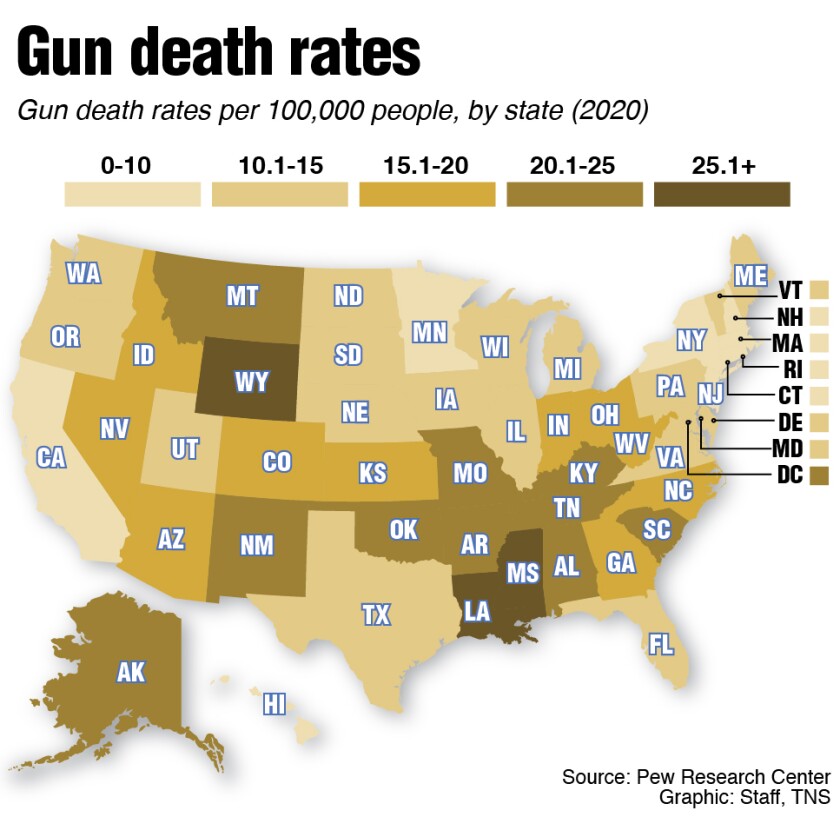ROCHESTER, Minn. — Nineteen children and two adults were killed in the mass shooting in Uvalde, Texas, on May 24. Besides the dead, the incident left nearly as many harmed, with news reports putting the number of those injured at 17.
Nonfatal injuries following mass shootings often become lost in the shock of multiple deaths, but a new study finds the injuries are far more extensive than previously known.
ADVERTISEMENT
The study, , is the first of its kind in nearly 30 years. It examined 403 patients who sustained nonfatal injuries between 2012 and 2019, in 13 consecutive mass shootings in the United States.
These included the 2012 movie theater shooting in Aurora, Colorado, that killed 12 and injured 56, and the 2017 country concert shooting in Las Vegas, Nevada, that killed 58 and injured 596.
In the study, the authors report that for every one person killed by a mass shooting, nearly six people are injured.
It found the shootings led to nearly $65,000 in hospital charges per person, and resulted in a "disability upon discharge" listing for 44% of those harmed.
Dr. Mark Langdorf is an emergency medicine specialist at the University of California, Irvine, and lead author of the retrospective record review.
"The public perception is if you don't die at the scene the doctors will take care of it," Langdorf said in an interview with Forum News Service. "That you'll go back to work and you'll go back to your families. But that's not the case. These people, many of them are horribly injured for life."
Langdorf said the typical hospital stay following a mass shooting was four days, and that "13% of our victims didn't go home — they either had to go to a rehabilitation facility or a nursing home."
ADVERTISEMENT
"Of the people who are admitted for care, 44% of them had a functional disability at discharge," he said. "Either they couldn't walk, they couldn't use their hands, they had brain damage or they had persistent breathing problems."
The study found 25% of those with a disability following a mass shooting could not walk, 17% could not use a hand or an arm, 8% had trouble breathing, 3% had cognitive problems, and 1% had digestive system damage.
"So almost half the patients, after they got out of hospital, did not come out anywhere near normal," Langdorf said. "They had documented disability from the gunshot wound."

People are injured in ways besides from firearms during mass shootings, Langdorf adds, events which made up 31% of all injuries.
"They jumped over fences, they broke ankles, they got trampled, they got stampeded," he said. "Some had chest pains, dizziness, and acute psychiatric presentations. You run from a mass shooting and you're really messed up emotionally. ... Those are all requiring resources for the hospital."
The study did not capture any disability incurred from long-term PTSD, Langdorf said, which he believes is a possible outcome as well.
Langdorf said researchers from 31 hospitals undertook the study because the science on gun violence as a public health crisis in the U.S. has been limited
ADVERTISEMENT
"Mass shootings are a public health emergency and have been for many years," Langdorf said. "I've been frustrated, as have many progressive physicians, on the lack of action on gun control and violence prevention, especially the lack of research on gun violence."
It is a burden, Langdorf said, uniquely magnified by firearms such as AR-15-style weapons.
"High velocity rifle bullets create an incredible cavity of damage expanding 5 to 10 inches from bullet path itself," he said. "It just destroys all the tissue around it.
"They often enter in a small area, say an inch-across entry wound, and their exit wound on the other side of the body is 10 inches across. They just blow out the tissue in between."
, a professor of emergency medicine at the medical College of Wisconsin in Milwaukee, has studied the effect of high velocity firearms on body tissue.
He says the weapons have an extremely high fatality rate due to the fact that the energy transfer when their bullets hit tissue vastly surpasses that of small caliber firearms, and even those of regulated weapons, such as the Thompson submachine gun.
"People think the bullets transferred are somehow all created equal but they're not," Hargarten said. "The energy transfers by the 5.56 NATO (bullet used in high-capacity firearms) is significantly different from a musket ball ... The Sandy Hook shooter represented the equivalent of 171 militia men."
ADVERTISEMENT
Twenty children and six adults were killed in the Sandy Hook, Connecticut, elementary school shooting in 2012.
"In comparison to what our Founding Fathers may have meant about militia men using a single shot musket in 1787, the mayhem you can produce with an automatic weapon and large capacity magazine in 2020 is enormous."









